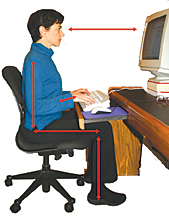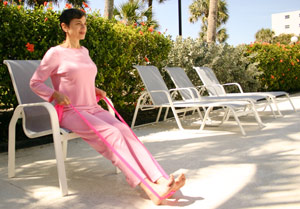 Nobody wants to grow old, least of all boomers. But we’re turning 65 at the rate of 10,000 a day, and will be for the next 17 years.
Nobody wants to grow old, least of all boomers. But we’re turning 65 at the rate of 10,000 a day, and will be for the next 17 years.
We’re running a little scared. We want longevity, but we’re scared of losing our mobility and independence. So we’re trying to stay active, or get active, in order to avoid decrepitude. With that many older bodies on the move, orthopedic injuries are on the rise. Once you’re injured, there’s excellent treatment and rehab available
But there is a lot you can do to prevent orthopedic injuries. If you want to stay active and mobile in the second half of your life, consider prehab today to avoid rehab tomorrow. Here’s a quick video to tell you more:
Who gets up in the morning thinking: I feel like getting a nice orthopedic injury today. What can I do to help that along? But we have them anyway, even if we’re disease free. We over use our bodies or use them wrong. We break hips and legs. We get strains and sprains. We get hurt at work, at home or playing sports.
Vintage Bodies Prone For Orthopedic Injuries
No matter how active we’ve been, our bodies are not the same as they were when we were younger. They’ve got miles on them. And like vintage cars, it’s not wise to drive them flat out. Those of us, who’ve used our bodies for a living, know we’ve had to make adjustments for our aging muscles and joints. Many of us are favoring old injuries that have left those body parts weakened and vulnerable.
We may be nursing over use injuries from repetitive actions. These can be anything from back problems from years of standing all day, to shoulder issues from years of manual labor, to carpal tunnel syndrome from constant mouse pushing. But it doesn’t have to take years. Raking leaves, shoveling snow or playing tennis all weekend when you’re out of shape can be an express ticket to Overuse Ville. And being overweight puts extra stress on your musculoskeletal system. But, there’s a simple fix that can reduce your risk for orthopedic injuries, give you more energy, stamina and even help you live longer
Prehab to Avoid Orthopedic Injuries
Two Types of Prehab
There are two main types: general and sport-specific.
General Prehab for Daily Life
Every day, we run for the bus or the phone, load groceries in the car, pick up children or pets and a million other things we take for granted. These all carry a risk for injury and I’ll bet we can all remember being injured doing them. Luckily for most of us the, injuries were limited to a little pull or sprain. But people do fall and break bones, dislocate limbs, have heart attacks and worse because they’re not fit enough for that activity at that moment. Being inactive and overweight adds to the mix. A simple fitness and weight management program may be all you need to help prevent orthopedic injuries during everyday activities.
General rehab for daily living as part of a personal wellness program: looks at the body as a whole, and develops it as a whole to maximize quality of life. This often includes strength training, cardio conditioning and core training, as well as some proprioceptive exercises.
Avoid Orthopedic Injuries with Fall Prevention
Falls are the number one cause of injury death in people over 65. One in three people 65 plus will experience a fall each year. And poor proprioception, not knowing where your body is in space is a leading cause of falls. Proprioception degrades with age but proprioceptive exercise can slow that down and help prevent falls. Add exercises like Tai Chi, and balancing exercises to your fitness routine. They feel great to do and can help keep you vertical into old age.
Sport-Specific Prehab is designed to get you ready for the rigors of a particular sport or physical endeavor. Good activity specific exercises pay special attention to the body parts most involved in that activity or sport with regard to use and form without ignoring the concept of training the body as a whole. Sport specific training is available at many gyms and community centers.
So I hope you’ve become a believer in the little proverb I’ve coined to remind my clients “An ounce of prehab is worth a pound of rehab.”









 Spinal nerves are routed from the vertebrae in your spine and connect with various parts of your body, including your internal organs. Exercise helps to keep your back healthy and avoid injuries or accidents that may occur even from simple movements like bending over to pick up something that dropped on the floor. It also prevents the back pain that can result from conditions like arthritis, obesity and psychological stress.
Spinal nerves are routed from the vertebrae in your spine and connect with various parts of your body, including your internal organs. Exercise helps to keep your back healthy and avoid injuries or accidents that may occur even from simple movements like bending over to pick up something that dropped on the floor. It also prevents the back pain that can result from conditions like arthritis, obesity and psychological stress. One of the most effective ways to relieve back pain is back extension. Back extension helps to reset your vertebrae into proper alignment and to relieve nerve pressure. You can do it standing, sitting or lying face down (yoga cobra pose).
One of the most effective ways to relieve back pain is back extension. Back extension helps to reset your vertebrae into proper alignment and to relieve nerve pressure. You can do it standing, sitting or lying face down (yoga cobra pose). 




